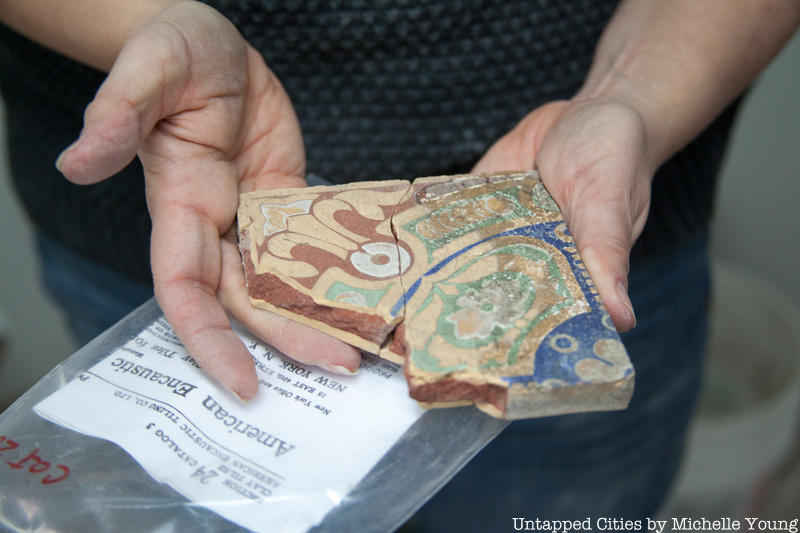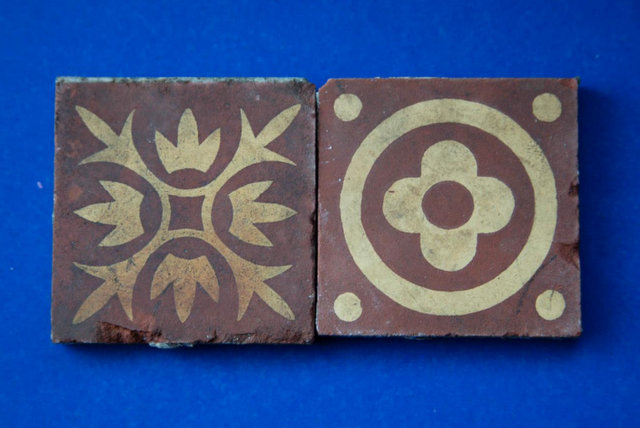3. Architectural Remnants from the Atlantic Garden

In addition to discarded bottles and plates, Chrysalis uncovered parts of the Atlantic Garden itself. In the excavation, part of the wall and part of the floor of Atlantic Garden were uncovered with artifacts found in the dirt within. Loorya believes these tiles, created by the American Encaustic Tile Company, were extras because no mortar was found on them. They nonetheless show how colorful and decorated the building would have been. You can also find tiles by the prolific tile company in the Columbus Circle subway station.
 Photo by Chrysalis Archeological Consultants
Photo by Chrysalis Archeological Consultants
The Atlantic Garden was so successful that they ended up expanding onto the plot of land next door to 50 Bowery to 52 Bowery, and all the way to the Elizabeth Street side. Eventually, the basement of the Atlantic Garden, which once had a bowling alley was filled up and built on top of.
In addition to these founds below ground, the Chu family removed a pulley from the vaulted retractable roof of the Atlantic Garden, bricks and wooden beams from the structure before demolition began.
It should be noted that no artifacts or archeological structures were discovered from the 18th century, when the site could have been the Bull’s Head Tavern. The Crysalis report notes, “It is possible, however, that the fieldstone portions of the wall uncovered at 50 Bowery were remnants of the Bull’s Head Tavern, incorporated into a nineteenth-century construction, either the 1825-1827 Theatre Hotel or the later structure of the Atlantic Garden,” but the team found it more likely that those portions were more likely constructed at the same time.





